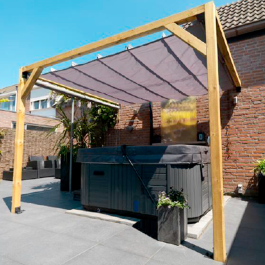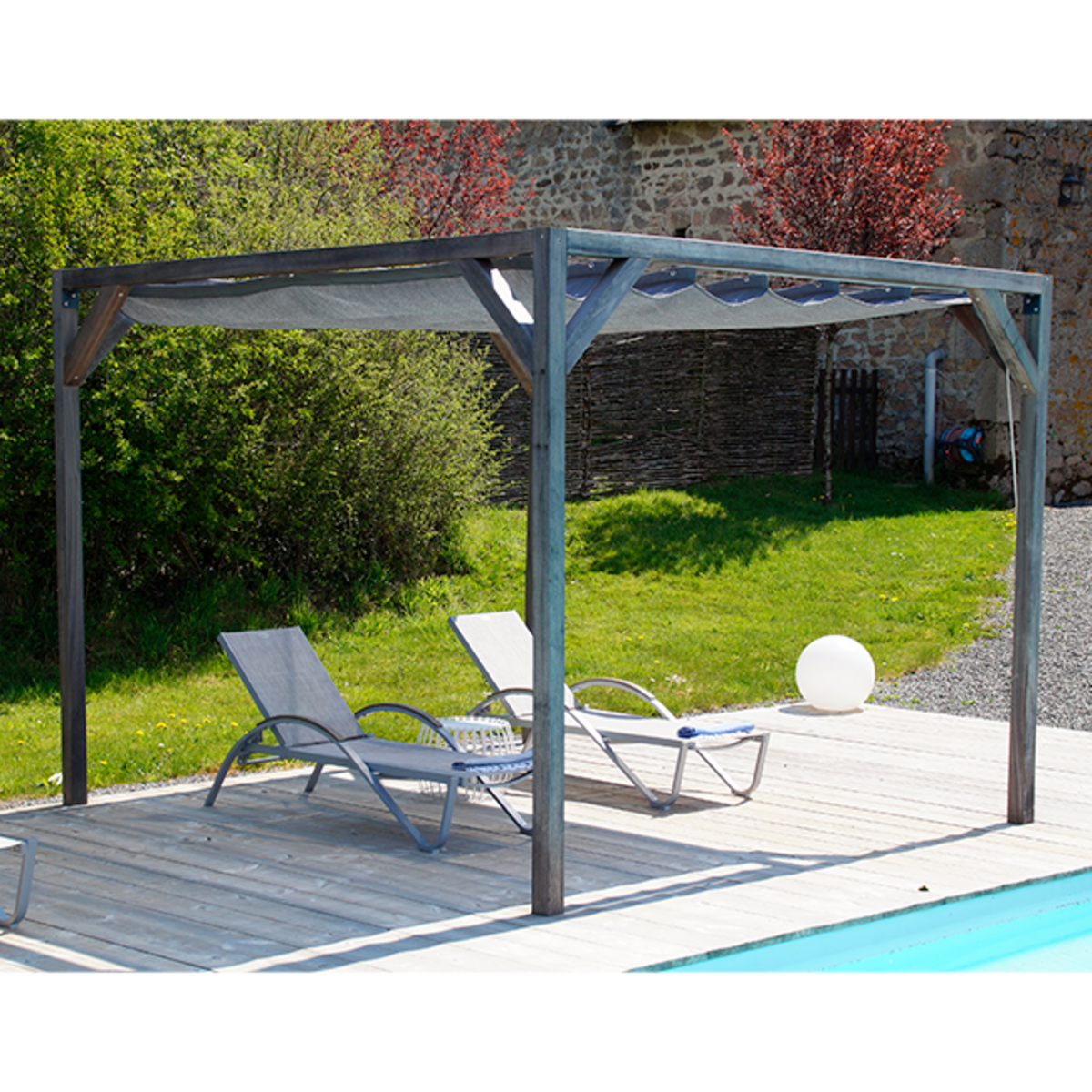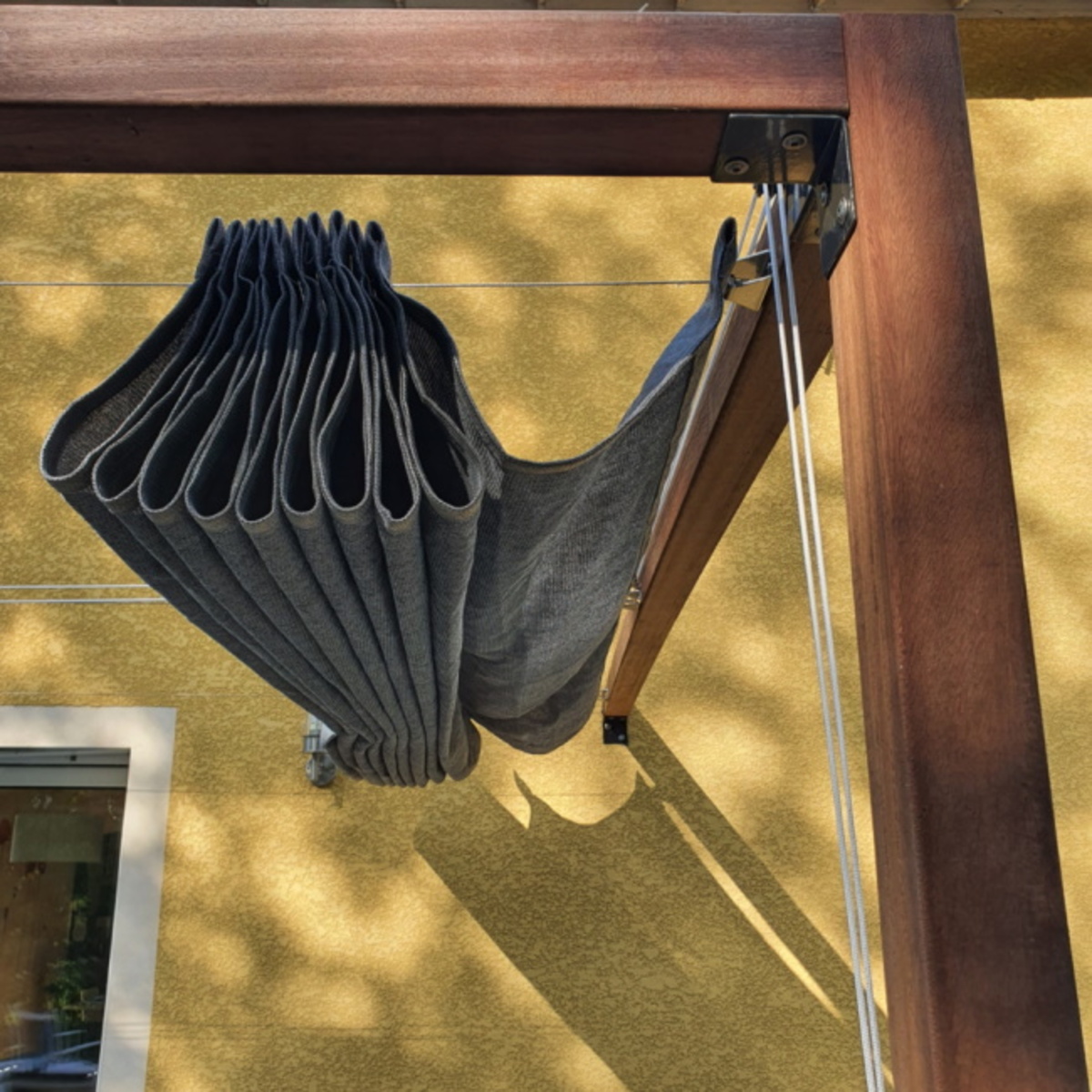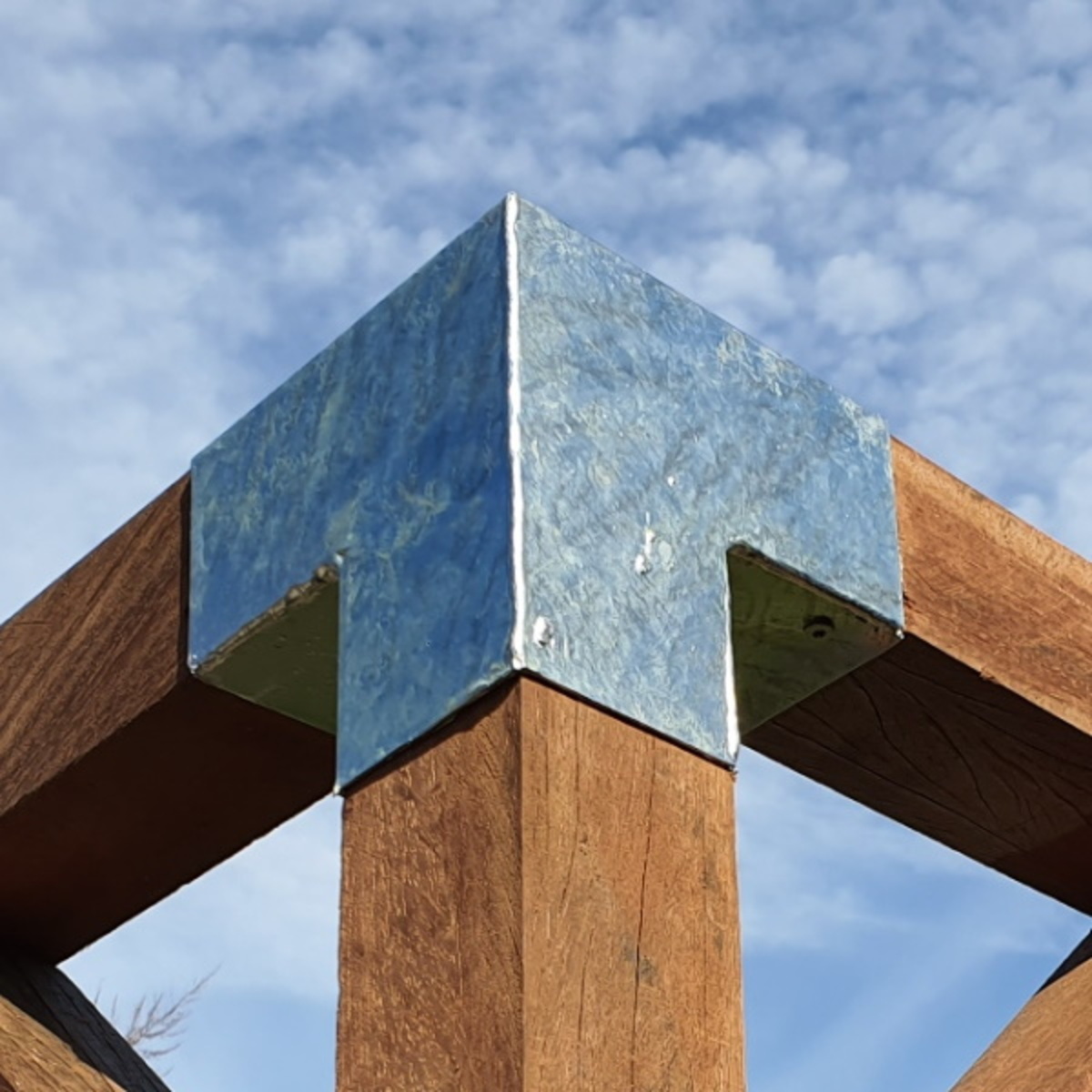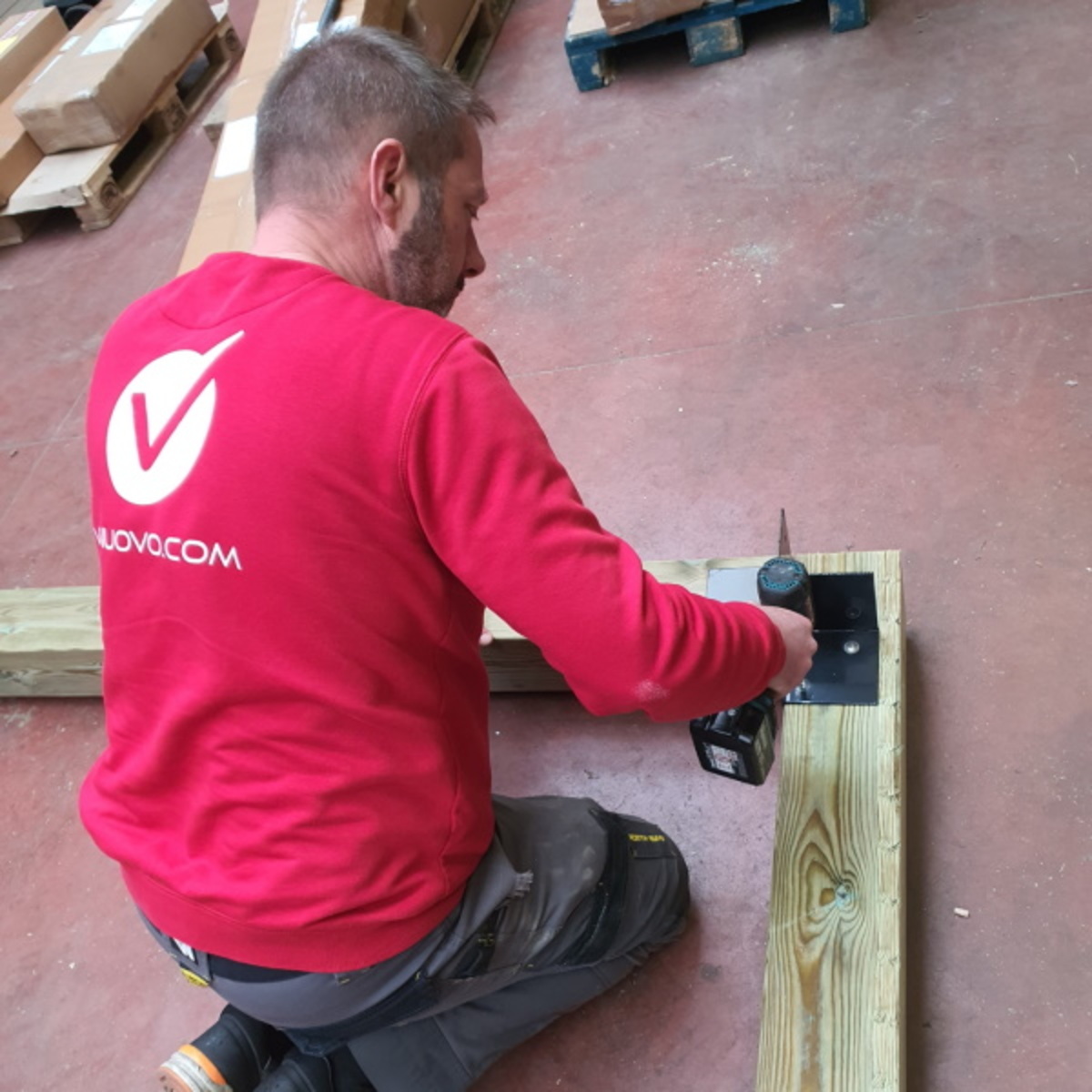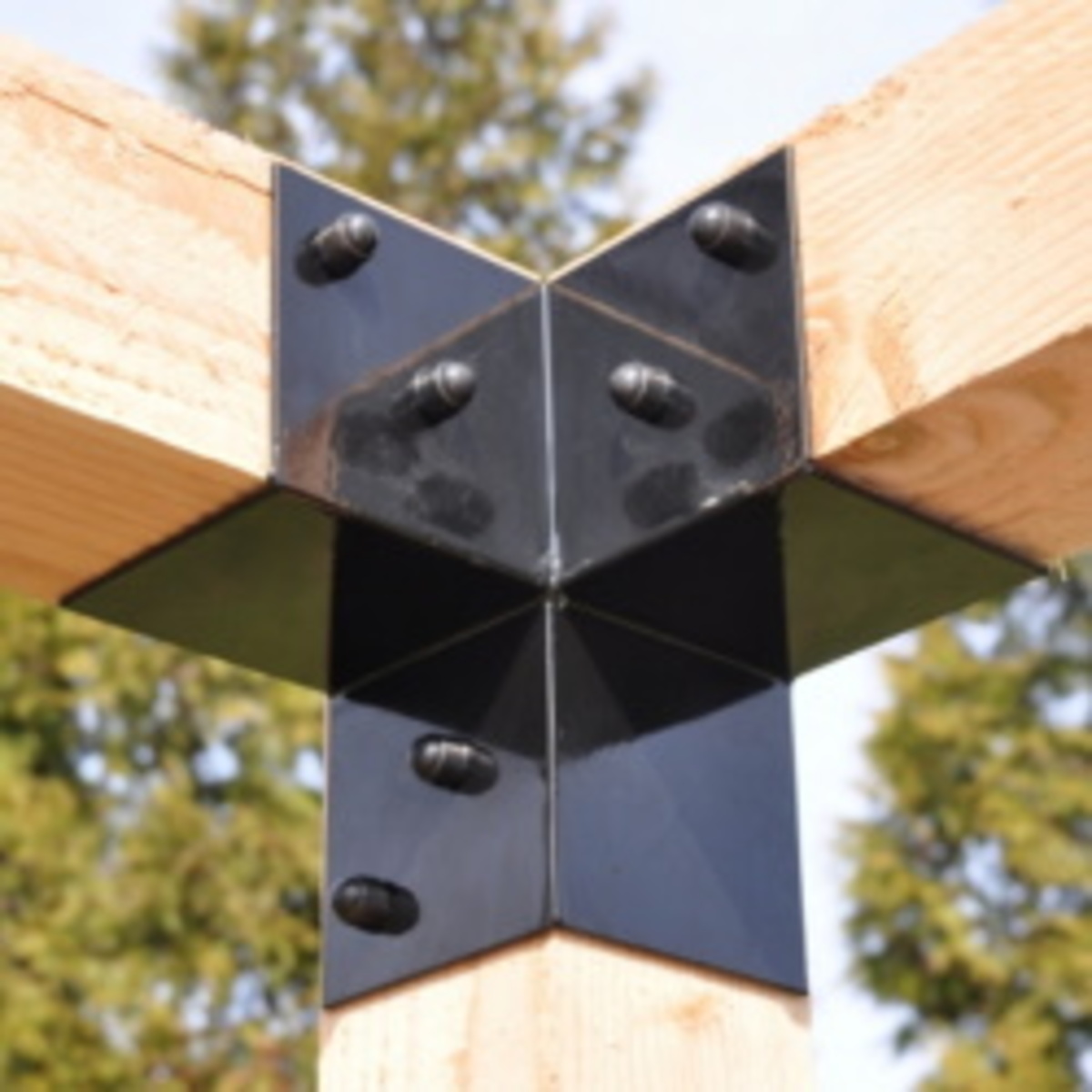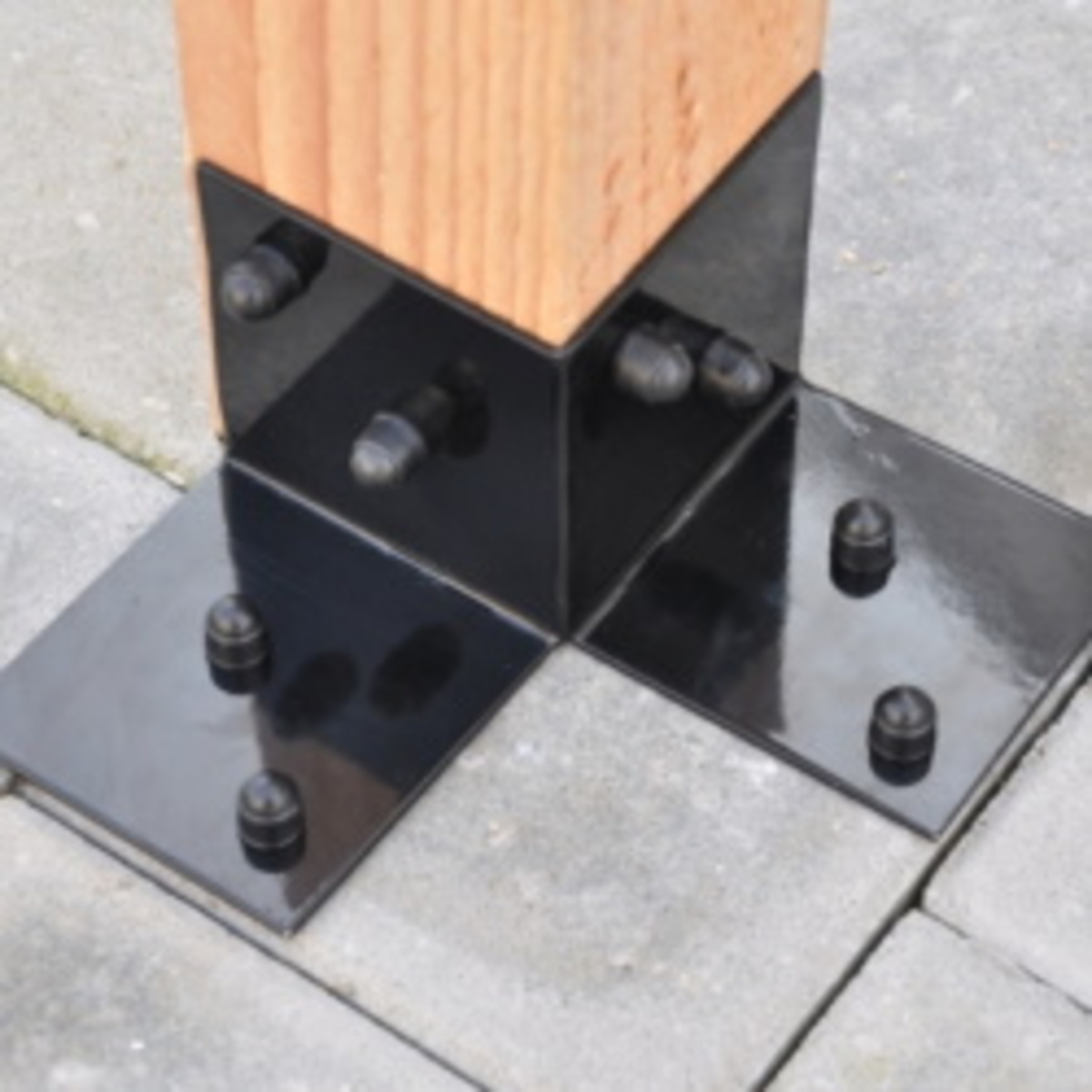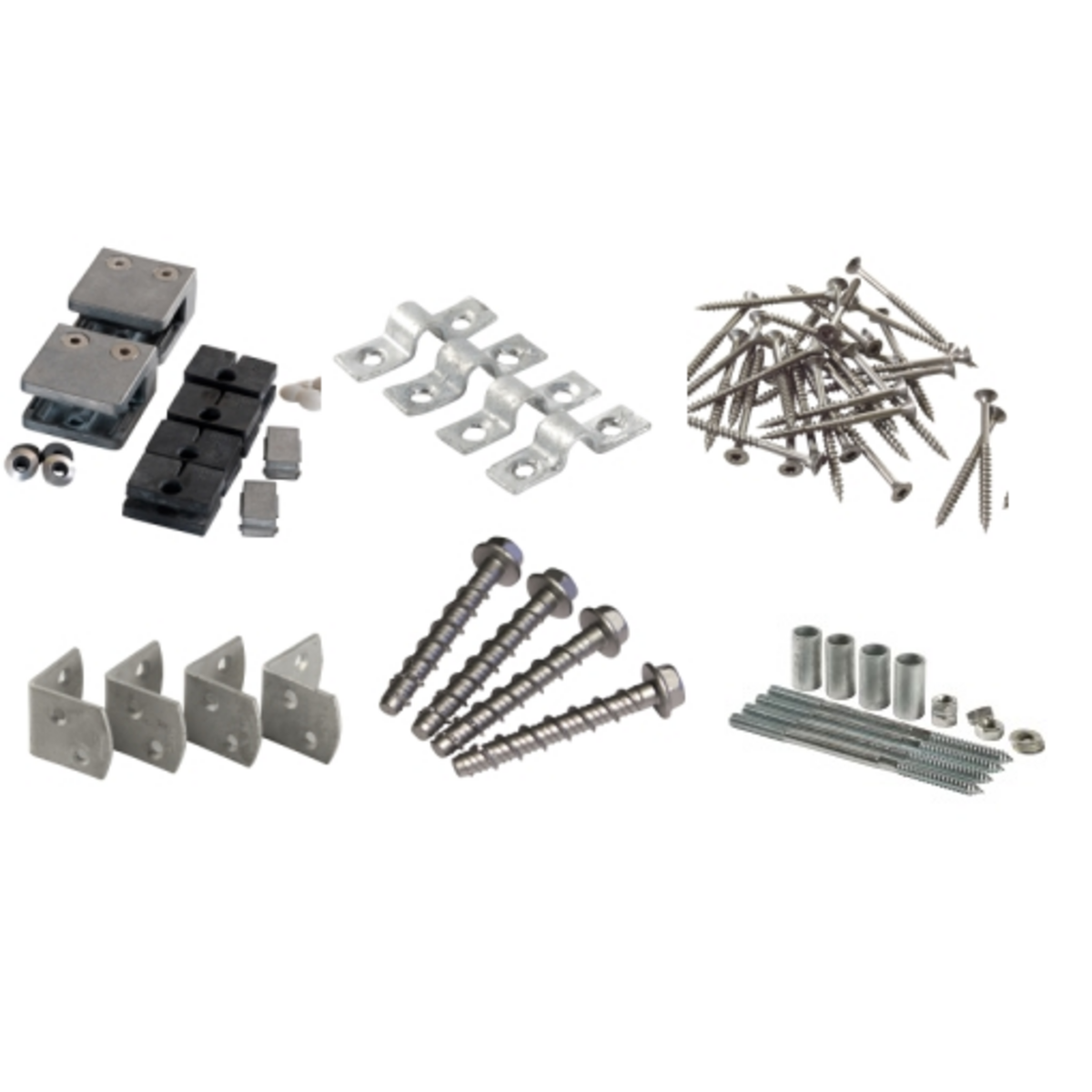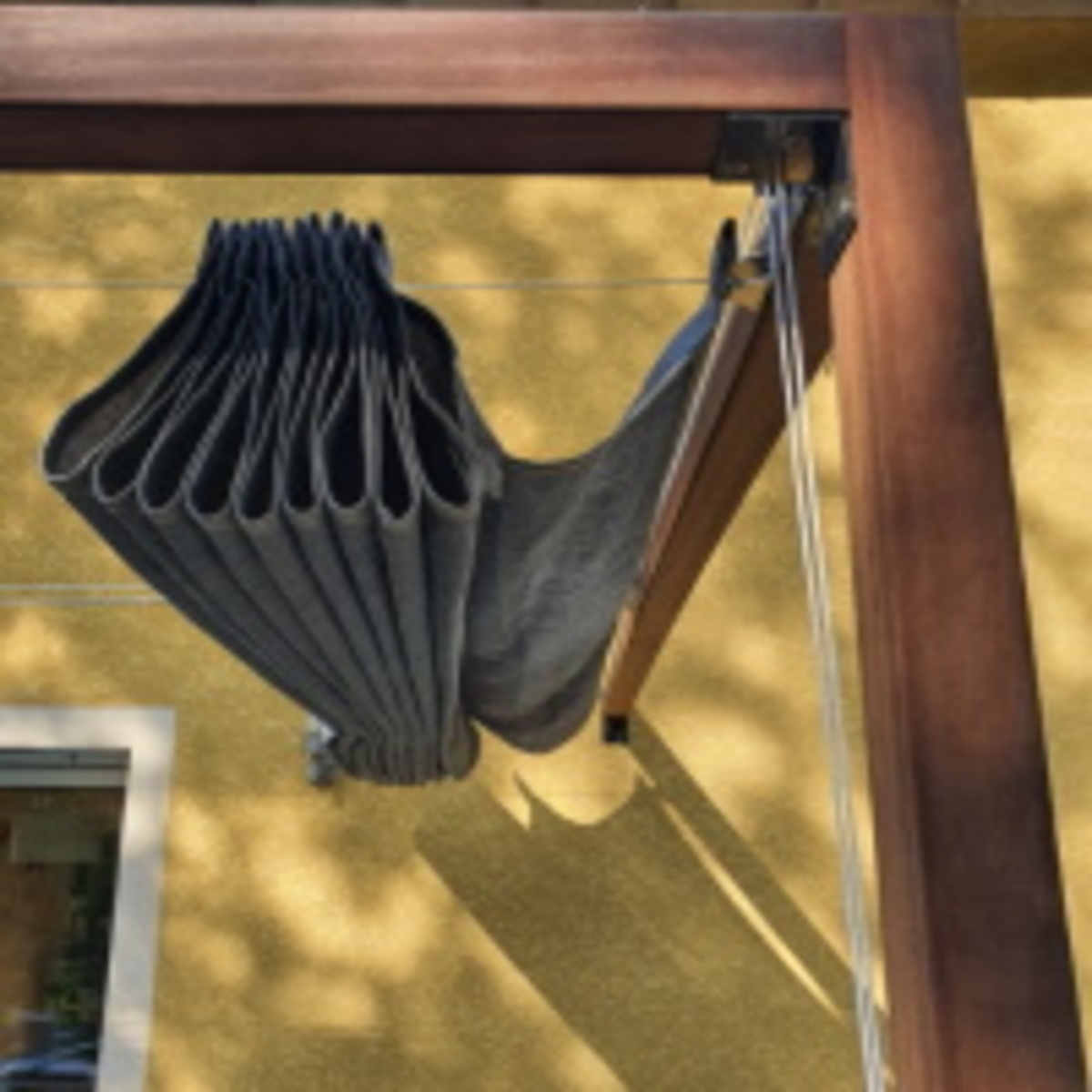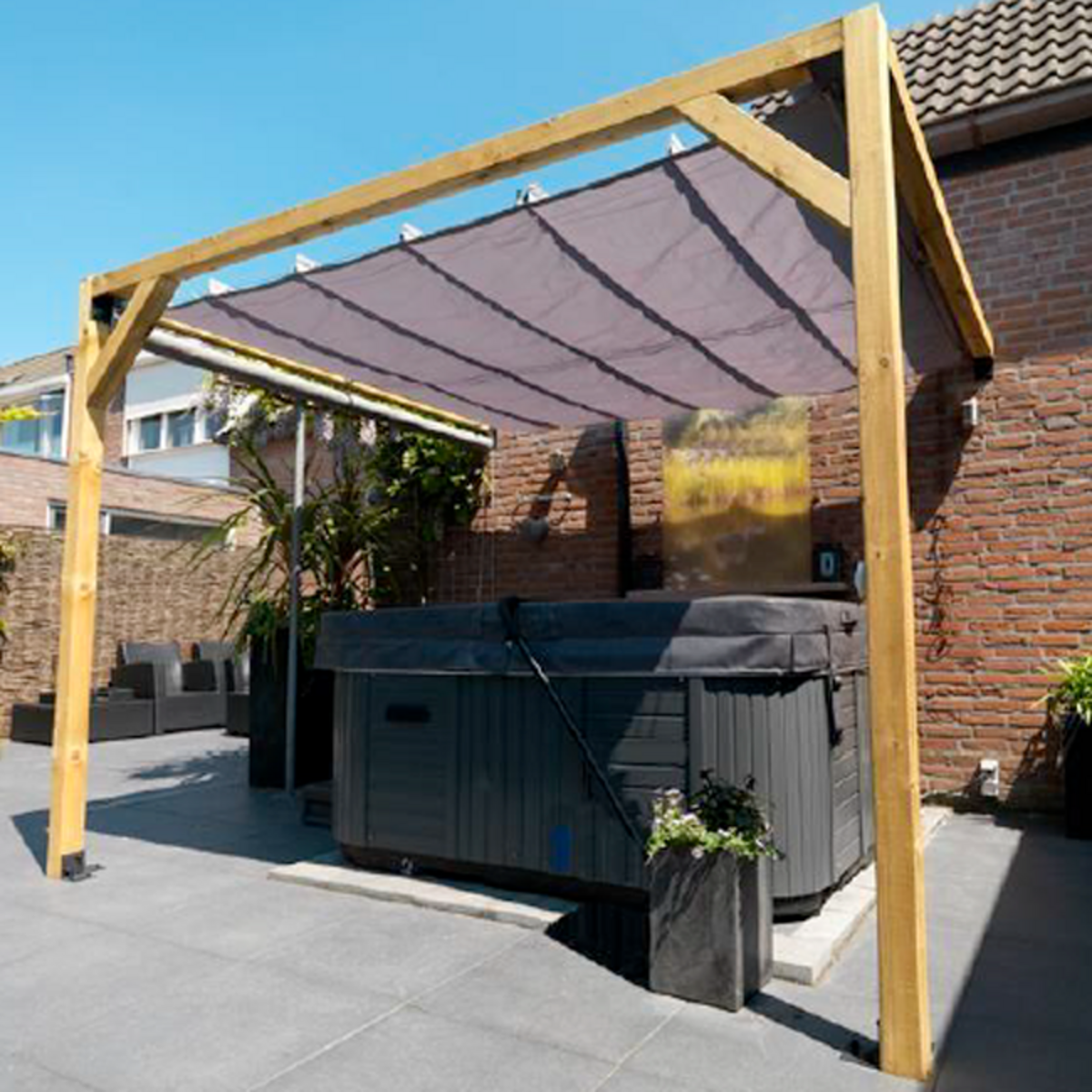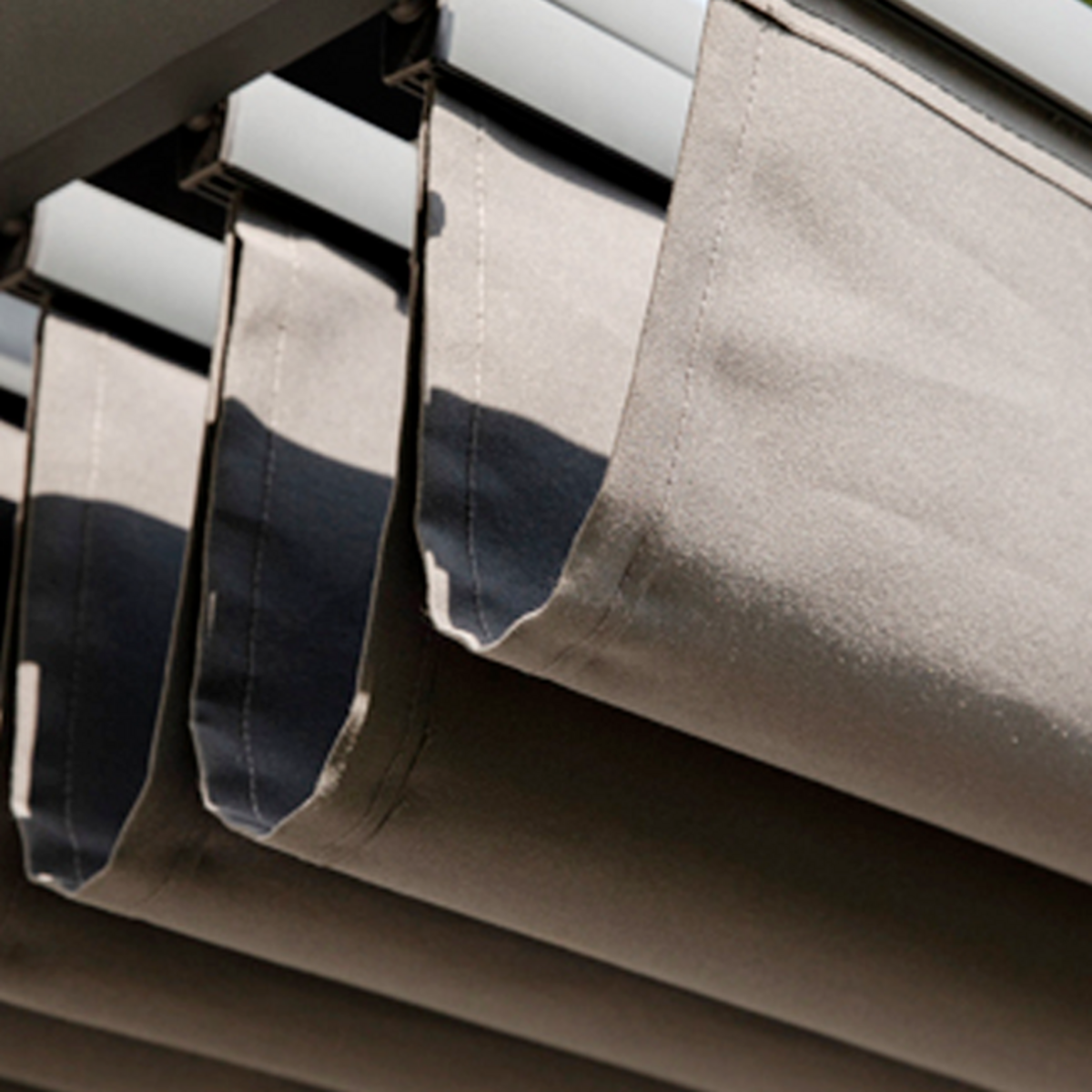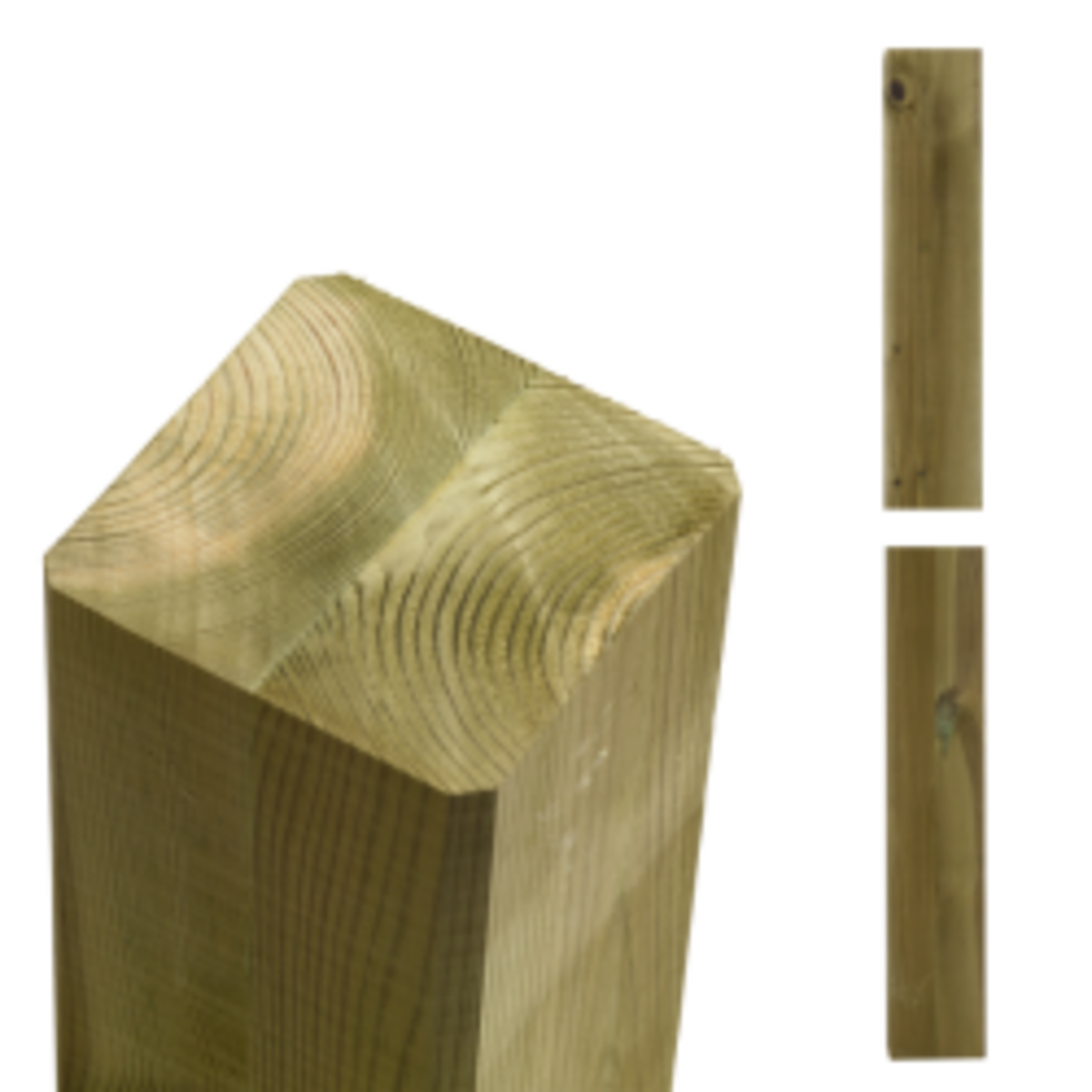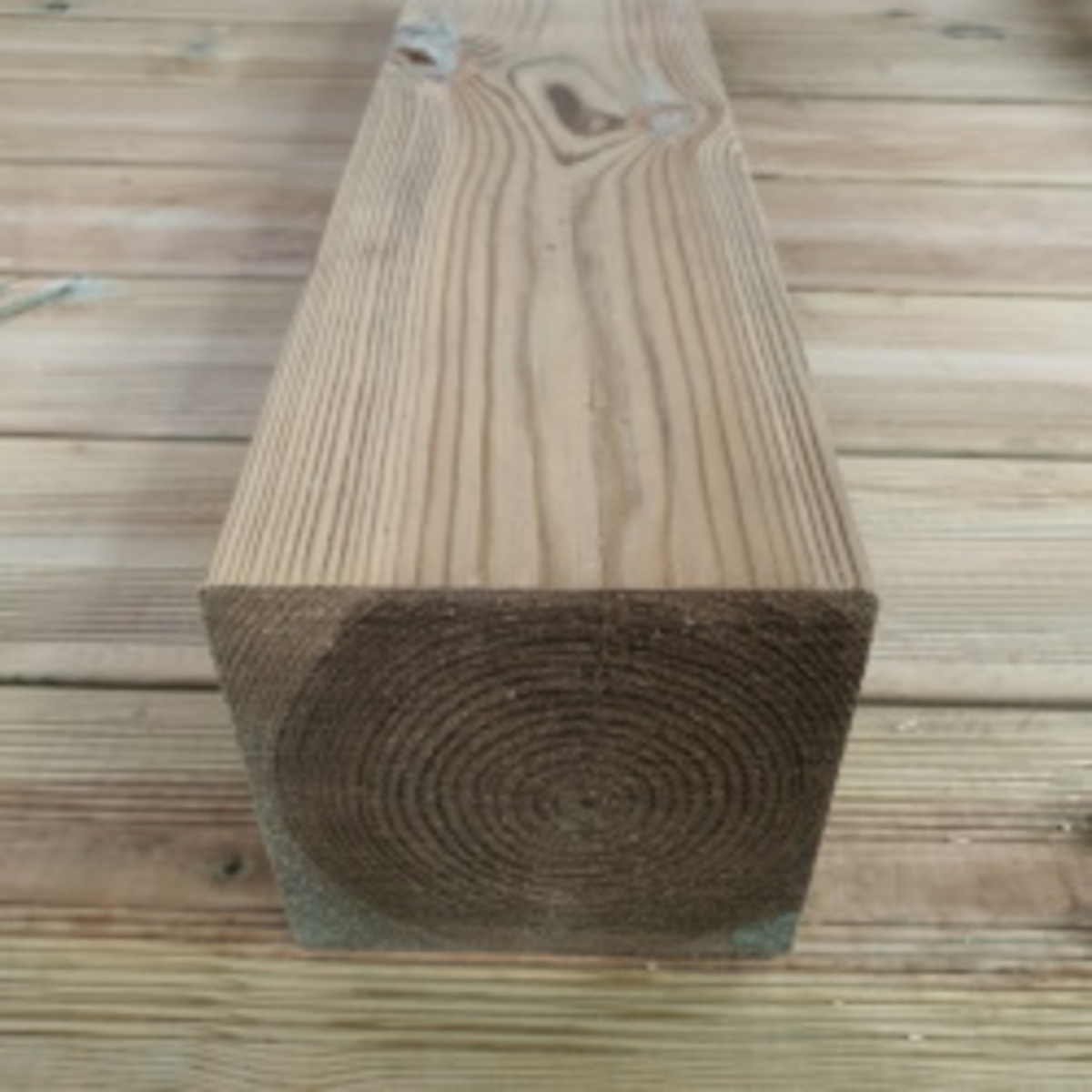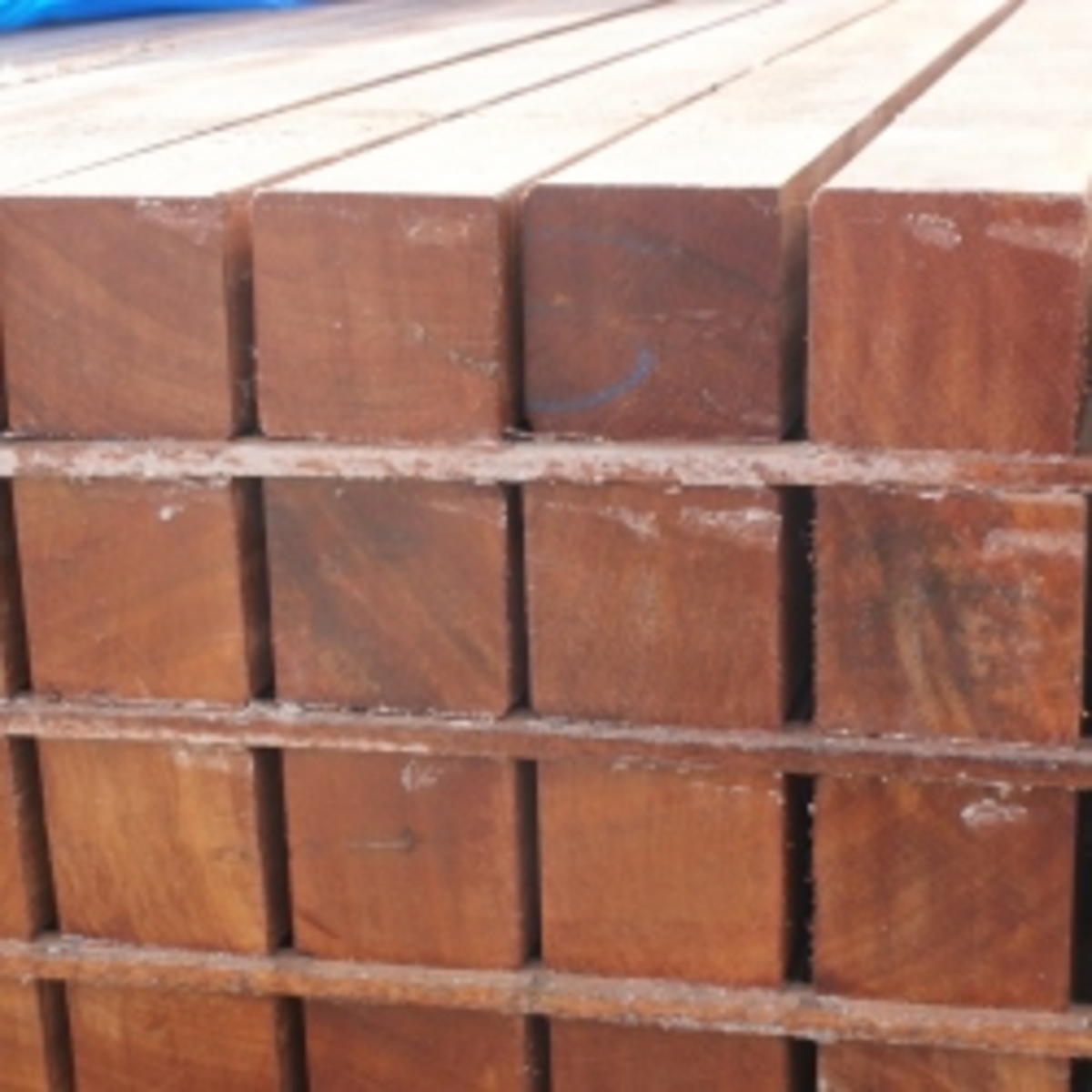How to build a pergola
(You'll find more products at the bottom of this page)
How to build a pergola?
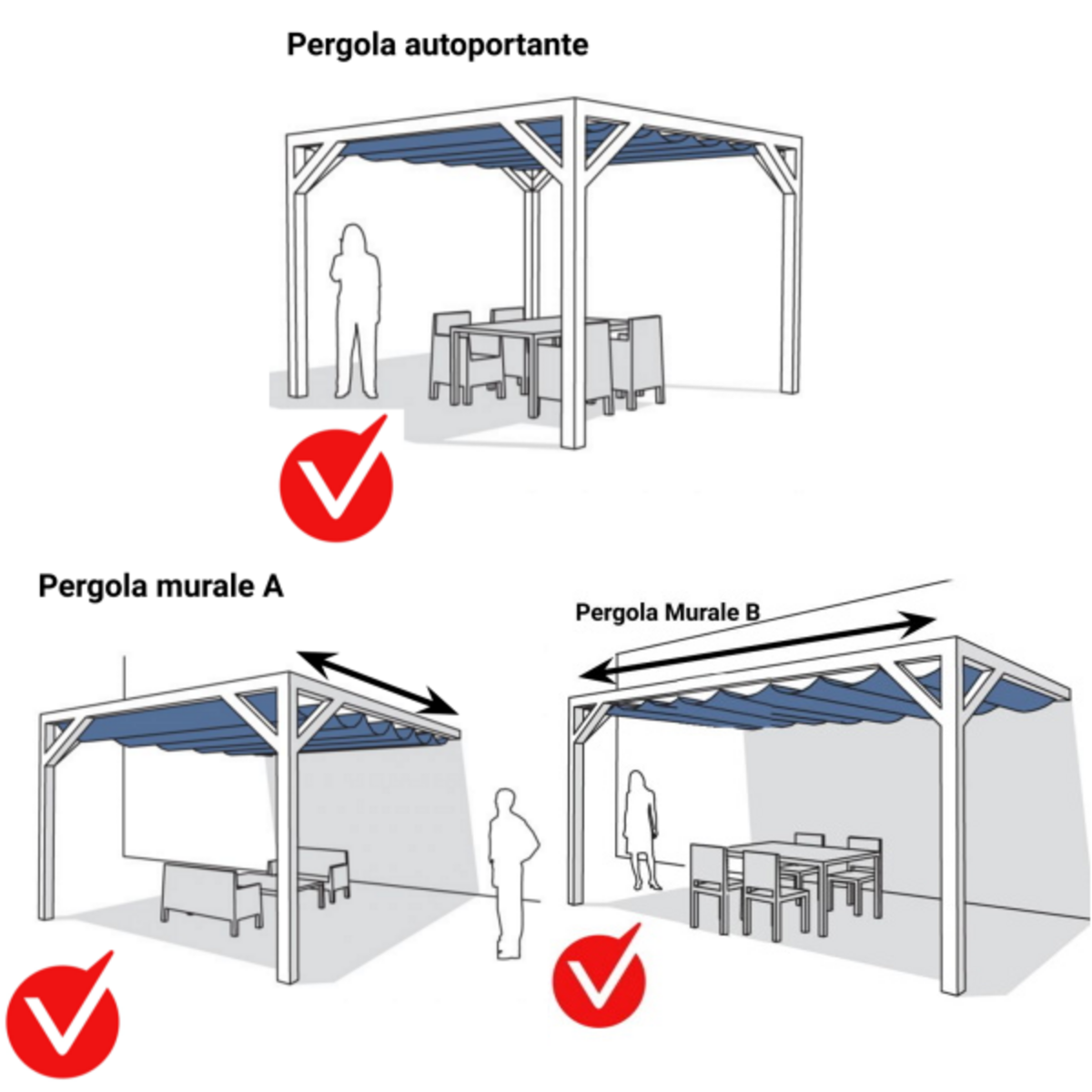

How to build a pergola yourself?
Building your own pergola is not as difficult as it seems! If you are a bit handy, you can easily make a pergola yourself. In this blog post, we will give you tips and ideas to build your own pergola from wood and which accessories or elements you can use to do it quickly, save and simply!
What types of pergolas exist?
Actually, we can distinguish 2 types of pergolas:
- Freestanding pergola, This is a pergola that is not attached to anything and has at least 4 posts.
- Lean to pergola, This type of pergola is attached to a wall at at least one side, in this case the pergola has 2 posts, but it can also be built in a corner of 2 walls so that the pergola only needs 1 post. It is even possible to build a pergola in a corner of 3 walls so that you don't need any posts at all!
There are also two versions that exist of the lean to pergola,model A, where the fabric slides away from or towards the wall, and model B where the fabric slides parallel to the wall.
When to use which type of pergola?
First, it depends on whether you have a wall available. If this is not the case, then of course you should make a free-standing pergola. If you do have a wall, first check whether your wall is sturdy enough to attach a pergola to it. A wall of brick, concrete or the modern insulation bricks with many hollow spaces should all be suitable.
However, if you have insulation on the outside of your wall, it is better to install a free-standing pergola against the wall. The same applies to rental properties, use a free-standing pergola to avoid problems with the landlord. Do you have an owner-occupied flat in an apartment building? Then take a good look at what the rules of the owners' association stipulate... Sometimes you are not allowed to drill into the walls, in which case you are better off using a free-standing pergola!
Where can you place a pergola?
Everywhere actually! Most people think of a pergola when they think of a pergola placed in the garden or on a terrace... But a pergola also offers many possibilities on a balcony! Especially on a balcony, you are often limited by the rules of the landlord or owners' association and a pergola gives many possibilities to arrange good sunprotection, without having to drill into walls or ceilings!
In our blog post "How to create shadow on a balcony?" we will give you more information about how to install a pergola, shade sail or blind / sunscreen on your balcony, without drilling holes!
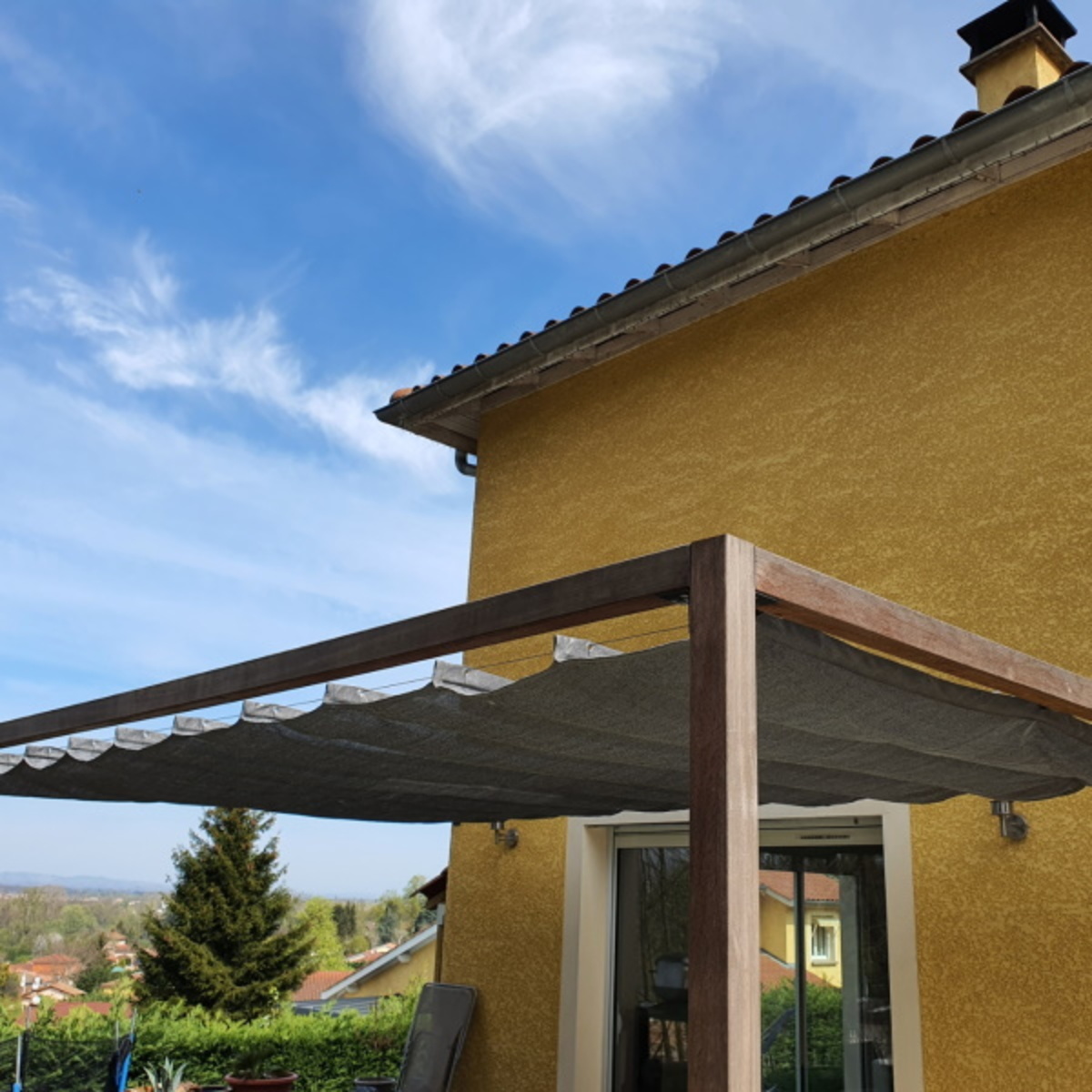

How to build a pergola?
First, let us make our shopping list of all the necessary material in order to make a freestanding pergola yourself:
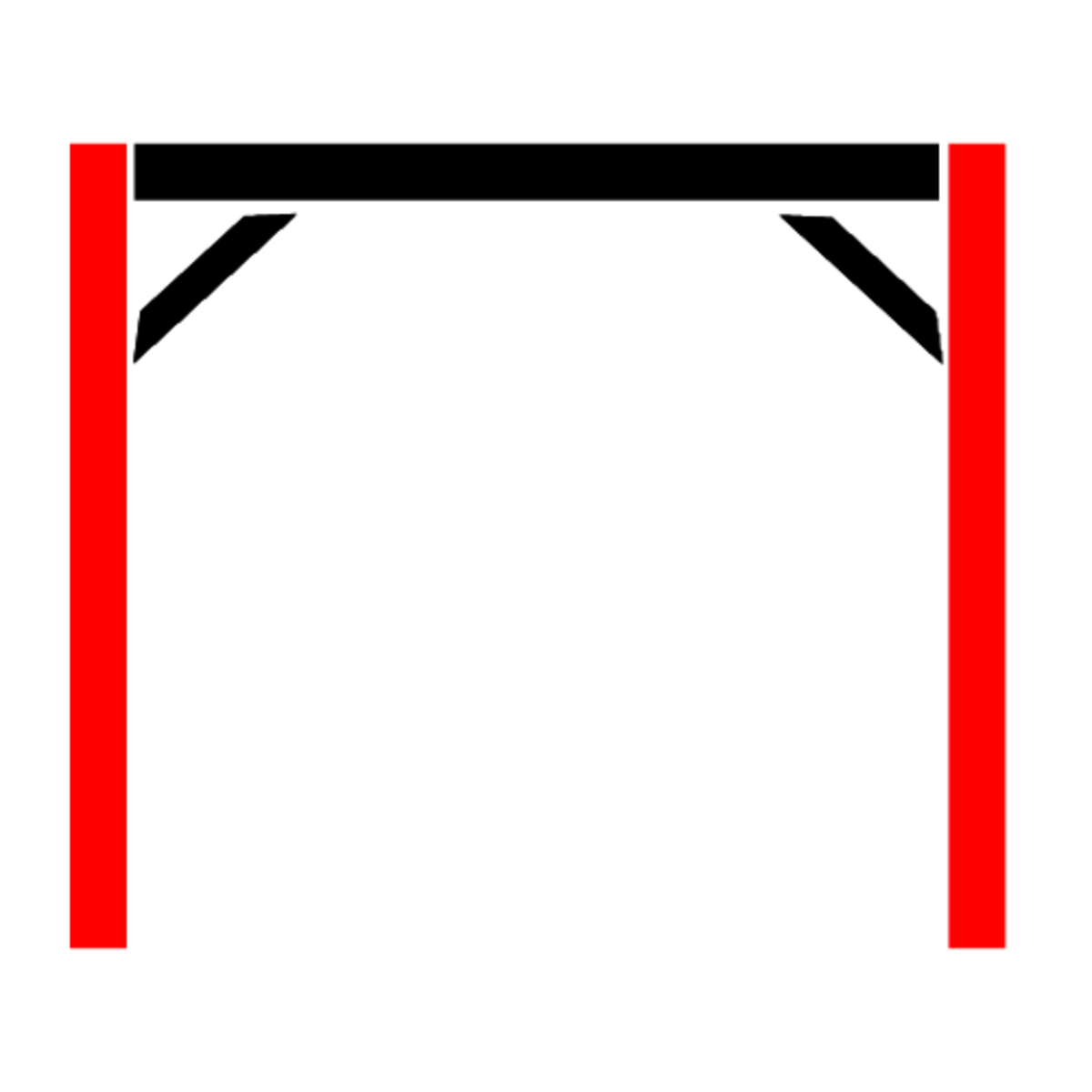

Pergola posts
Posts are the upright legs of a pergola. For a free-standing pergola you will need at least 4 posts.
Whether you need more posts depends on the size of the pergola and the available length of the beams. For example, if you want to make a pergola of 5 metres long and you can only get beams of 250cm, you will need 2 beams of 250cm long in the length and you will need to place an extra post in the middle to support the beams.
For the height of the posts, we recommend a height between 220 and 250cm. If your pergola is higher, there will be too much sun on the side, if your pergola is lower, it gives a locked-in feeling.
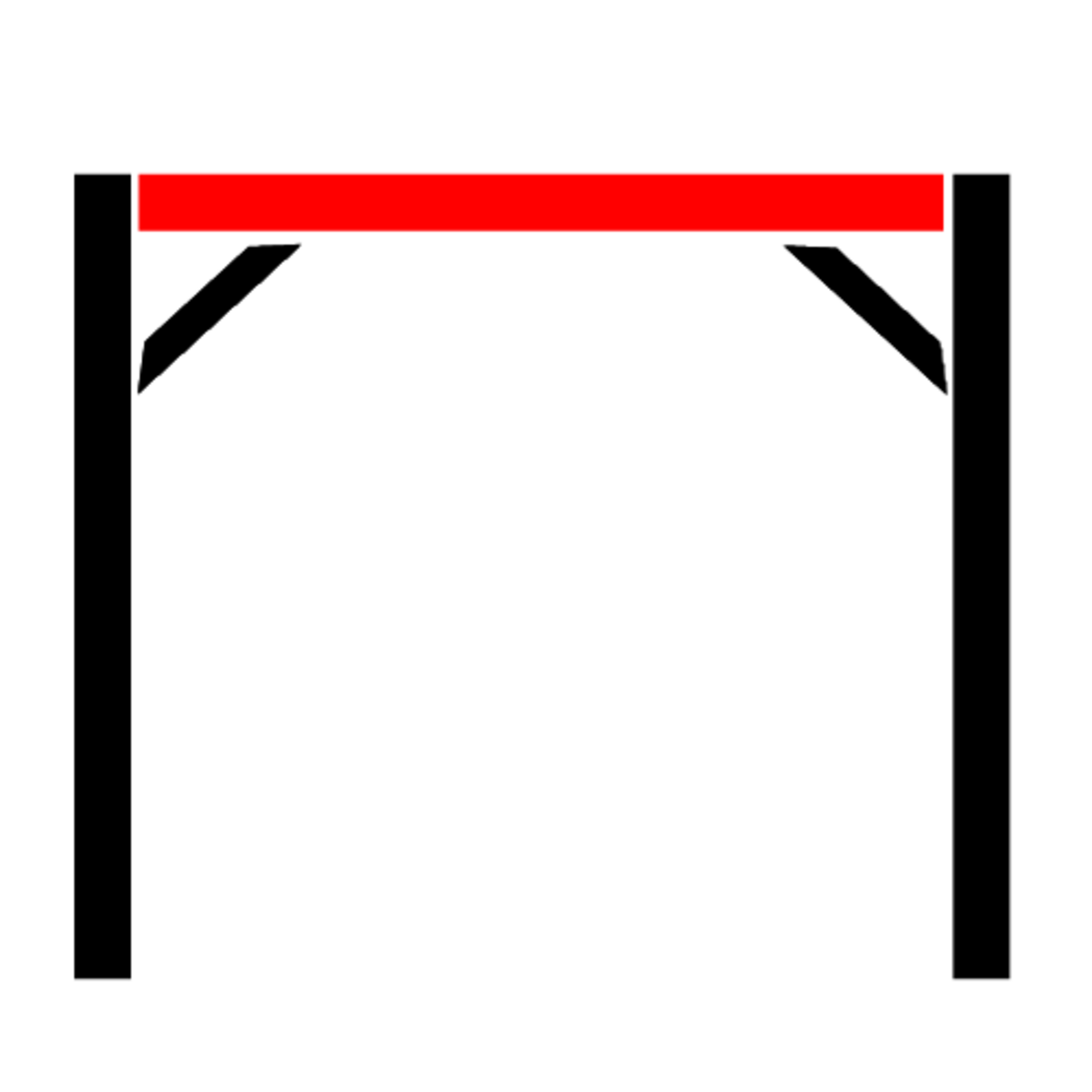

Pergola beams
Beams are the horizontal poles that connect the posts at the top.
Shade sails, harmonica retractable canopies and roller blinds or screens are usually attached to these.
For a small pergola, you can usually get the beams at a hardware store. However, DIY stores usually only carry poles up to 180cm and that is very short for a pergola, unless you don't mind installing a lot of posts... But this is not very esthetic and more poles as beams cause instability of the pergola, so it's best to use beams in one piece! We sell hardwood beams up to 500cm long. The only disadvantage of these beams is that transport is very expensive because of the length and they are hard to come by because there is not much good quality straight wood of this length available. We are therefore a bit careful with them and do not sell them to be cut into pieces!
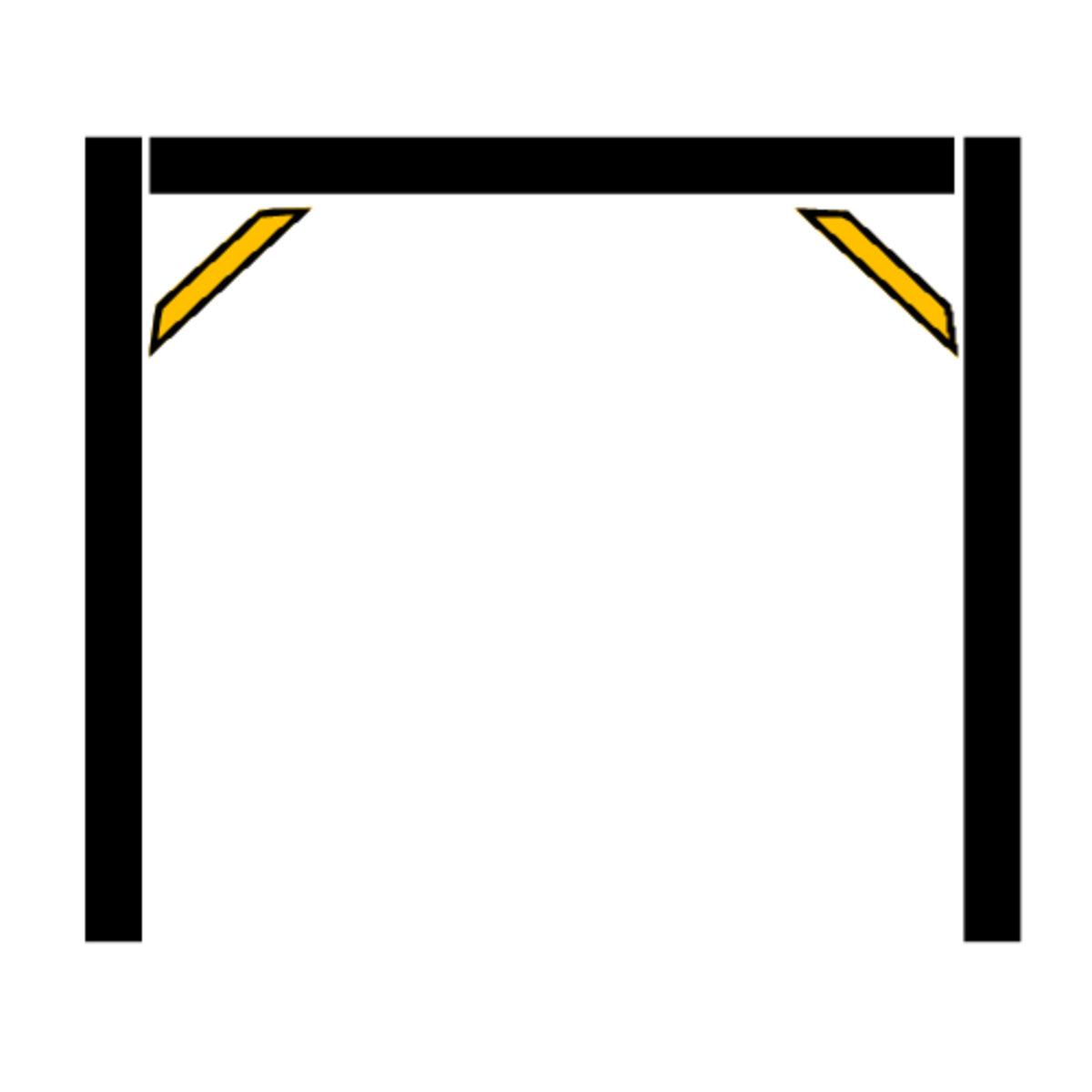

Pergola braces
Braces are the angled beams at the corners of the pergola that provide stability.
Many people think that they don't need braces when they use corner brackets, but unfortunately this is not the case... A corner bracket offers too little support, especially in case of larger and freestanding pergolas. In strong winds, the wobbling of the beams could cause them to break out of the bracket, and of course you don't want that! Therefore, just use braces, then you will have no problems at all!
I can hear you thinking; "but aren't there aluminium pergolas without braces?" Yes, there are... But in this case, make sure you buy a good quality pergola, because even aluminium when cheap quality will break during strong winds and then you will have spent a lot of money for nothing!
You'll find all the wood that we can supply for your pergola at the bottom of this page.
Corner brackets
Corner brackets and extension brackets are used to connect the posts and beams between them.
If you are an experienced carpenter, you can of course make a good corner connection yourself, but for most people a corner bracket is the easiest solution!
We have about 30 different pergola brackets in stock, please have a look in category: Pergola brackets
Ground fixing
To fix your pergola on the ground, there are several possiblities.
First of all, I would like to say that our hardwood pergolas are very heavy and that we have never fixed one to the floor and never had any problems. It is only possible that a pole moves a little when someone leans against it or kicks it. A pine or aluminium pergola however is not heavy enough and needs to be secured, especially in windy conditions!
First possibility; you can, of course, bury the posts of a pergola into the ground. This will be okay when using good hardwood, but I would advise against it when using pinewood, even when pressure treated... After a few years it will rot anyway.
If you have a wooden or concrete terrace, you can easily screw the pergola in place with the following floor fixing brackets, you can find them on our page: Pergola brackets
Of course, you can also drill a hole diagonally/angled in the post and floor and screw a long screw through it.
Screws
Of course, you will need screws to secure all the parts of your pergola together.
Use only good quality stainless steel screws! It's a shame if your pergola collapses after 2 years because you used cheap, ordinary screws... Nesling & Garviks supply stainless steel screws with almost all their products, but to be honest, they are rather soft, so they break very quickly. In pine wood this is usually not such a big problem, but in hardwood you can't use them at all! I have been looking for good stainless steel screws for a long time and I have been using the Reisser screws from Germany for years now. True, they are quite expensive, but of very good quality and I don't use anything else! With our complete pergolas, delivered as a kit, we only use Reisser screws!
Exactly which screws you need and how many depends of course on the pergola you want to make. In the near future, we will put a number of blog posts online for specific types of pergolas, then we will also give you the construction plan for each pergola, with all dimensions and a shopping list of the materials we used.
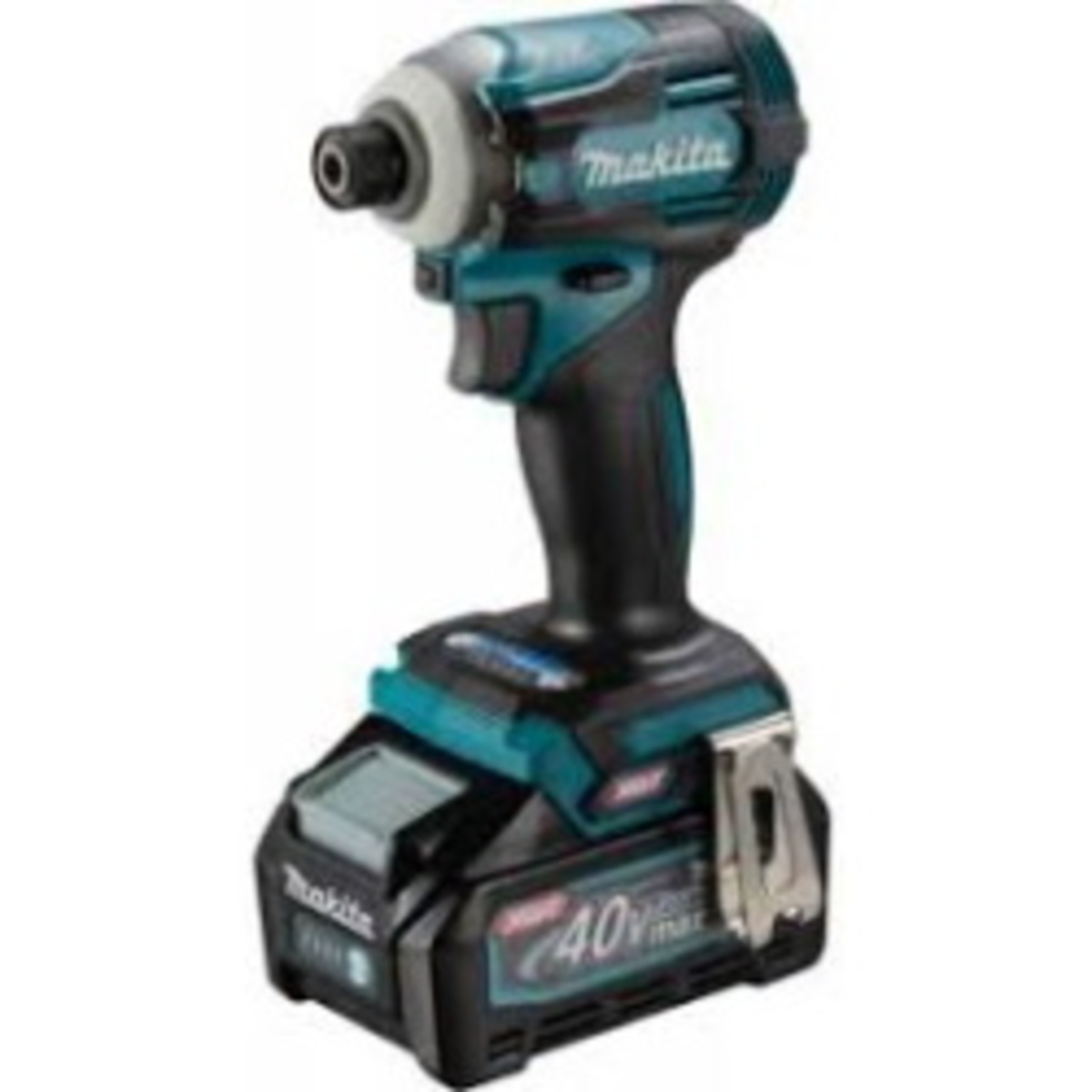

Tools
Making something without tools is very difficult...
Even if you buy a complete pergola from us as a kit, you will need at least a screwdriver and several bits.
If you make a complete pergola yourself, you will need at least a saw (machine), a drill, a set of good drills (for hardwood, use special hardwood drills) and an electric screwdriver.
So now you have all the hardware for the structure of your pergola. Let's see what we can propose for the roof.
There are several options for closing your pergola so that it provides shade or even is waterproof.
Personally I have a strong preference for retractable canopies. They are easy to install, not too expensive and you can choose wether to open or close them. Sometimes I like to enjoy the sun after all!
Below is a list of possible choices:
Retractable shade canopy for a pergola
We have been using the Nesling & Garviks retractable shade canopies for our pergolas for many years now and to complete satisfaction of our customers!
The canopy slides over stainless steel cables that are mounted lengthwise on the beams of the pergola. There is a lot of tension on these steel cables, so use at least beams of 9x9cm! A cord is used to open or close the pergola canopy. All fastening materials are supplied with the canopy. However, I strongly recommend to buy some good stainless steel screwss the ones supplied with the canopy are from mediocre quality. I recommend the Reisser stainless steel decking screws. (For a 370cm wide pergola canopy, you'll need 36 screws)
The retractable shade canopies are made of HDPE and filter approximately 95% of the UV-rays. Personally I feel it very convenient to have a little sunlight coming through, this avoids feeling locked-up under a completely closed roof. Yes of course, rain goes also through, but in general, when it rains, I prefere to be indoors! ;-)
Nesling or Garviks canopy? It's up to you! Both of them come from the same factory, same material, same accessories, same quality. Both are available in off-white, sand or antracite colors. The only difference is in the off-white color, the Garviks off-white is a little bit more creamy/yellow then the Nesling version.
Maintenance tip: besides keeping your canopy clean, we strongly recommend to grease the stainless steel cables with vaseline as from the first use! Take a cloth, some vaseline on it and grease the cable. Repeat this untill the cables are immerged with vaseline. Vaseline won't stain the canopy. The job is done in 10 minutes but it really helps in every days use. Repeat this everytime you feel the canopy "scratches" on the cables, normally 2/3 times a season.
Waterproof retractable pergola canopy
For years we have been receiving requests for waterproof shade sails for pergolas. And finally both of our suppliers have come up with a solution!
Garviks provides a Teflon coated waterproof retractable pergola canopy that does the job and comes for a reasonable price. The structure of the canopy is exactly the same as for the shade pergola canopies, only the cloth is different.
Nesling could have supplied the same material but they were not satisfied with it. They have thought a lot about it and together we have checked out various options. Now, Nesling has finally managed to develop an almost perfect solution and it is available on the market since 2020! The Nesling prosail is made from a heavy duty material and the bars are made out of aluminum sliding in rails mounted on the beams of the pergola.A very robust solution, unfortunately coming with some inconveniences:
You need to be very precise on the dimensions of your pergola as rails and width need to fit exactly! We strongly recommend that you order your Nesling prosail BEFORE building your pergola. This way you’ll be able to take the exact measures on the job. it would be a shame if it doesn’t fit in the end…
The Nesling Prosail comes at a much higher price then the Garviks variant.
Note; we don’t have over 15 years of experience yet with the waterproof canopies like we have with the shade canopies. For the moment no complaints, products are looking good, but I’m really curious to see what it does in the long term!
Another note: please bear in mind when mounting the waterproof canopies, that you'll need an inclination of 2 to 3% to ensure the water flows to one side of the pergola. Water that doesn’t flow off will create a huge weight on the cloth which might damage it.
And now that we have everything let's start building your pergola!
When you have everything you need, you can start making the pergola.
Most of the preparation for the pergola can be done by 1 person. Sawing the wood, fixing the brackets, creating the arches etcetera. Keep in mind that you need at least three (strong) people for putting up the pergola, preferably five. Once everything is prepared, putting the pergola up will take 30 minutes, hand a beer to your helpers, thank you very much! Then you can continue to finish the pergola like fixing the canopy, by yourself.
STEP 1
Saw the posts to the desired height. If you are using Cubic elements, try to see if the element fits well on the post. If they do not fit well, then plane the pole slightly so that it does fit. Then screw the fitting element onto the post. Do not use one element to fit all posts, each element can be slightly different due to the welds. If an element fits the post, then use it for that post too ;-)
STEP 2
Then saw the longitudinal beams to the correct length. When you are limited by the outer dimensions of your pergola, take this into account: suppose your pergola has a maximum length of 300cm and your posts are 9cm thick. Then saw off the beam at: 300-9-9cm = 282cm. This is because at each corner of the beam you have a post that is 9 cm thick.
STEP 3
Then saw the width beams to the correct width. Even when using a Coolfit retractable canopy, the width must be large enough! If you have a retractable canopy that is 290 cm wide, adjust the width of the width beam to at least 300 cm! You need at least 5cm of free space on both sides of the canopy to prevent the fabric from rubbing against the side beams as a result of the wind and when sliding open and closed. With 10cm on both sides, you have some extra margin for error when mounting the canopy. The total width of the pergola therefore becomes: 9cm post + 5cm clearance + 290cm fabric + 5cm clearance + 9cm post = 318cm. (the beam itself should be 300cm wide.)
STEP 4
Now you can start the assembly. Lay the longitudinal beams on the ground and place the posts against them. Attach the corner brackets. Because I like extra sturdiness, I drill extra holes in the corner brackets so that each beam is screwed to two sides of the corner bracket. In addition, I drill a hole on the side of the post, in the length direction of the longitudinal beam. Screw a REISSER TKS 180 screw in and your pergola is firmly in place!
STEP 5
Place the width beams next to it and prepare all the screw holes so that you can screw everything on without having to drill when the pergola is straight up.
STEP 6
Now the real work begins! You have made 2 long sides / arches of the pergola and these can now be put upright. As you have 4 posts, this is of course best done with 4 people! Put the 2 sides upright, at the right distance from each other. Then a fifth person climbs onto a ladder with the first width beam and slides the beam into the corner brackets. It is important that nobody moves their post, otherwise the crossbeam will fall down! The fifth person then screws the width beam to the corner elements as quickly as possible. Do the same with the second width beam.
Congratulations, the hardest part of building your pergola is done!
STEP 7
Now you can place the braces. Place a step next to a post, hold the brace between the upright and the beam, have someone push against the post until the angle between the post and the beam is at the right angle and the brace fits, pre-drill the screw holes in hardwood, and screw down the brace. This way you go through all the posts and place the 8 braces in total. (in case of a freestanding pergola. For a wall mounted pergola you only need 4 braces. You don't need to fix braces to the wall).
STEP 8
Place the pergola in exactly the right place and attach it to the floor if required (especially recommended for light pergolas made of pinewood). The pergola itself is ready!
STEP 9A - fixing your retractable pergola canopy
The fastening of the retractable canopy fabric is well described in the product manual. See also the video on the right. The screws supplied can be used in pinewood, for an installation in hardwood I recommend the hard stainless steel screws from Reisser. The number of screws depends on the width of the Coolfit retractable canopy:
200cm width: 20 x 5x60mm stainless steel A2
290cm width: 24 x 5x60mm stainless steel A2
370cm width: 36 x 5x60mm stainless steel A2
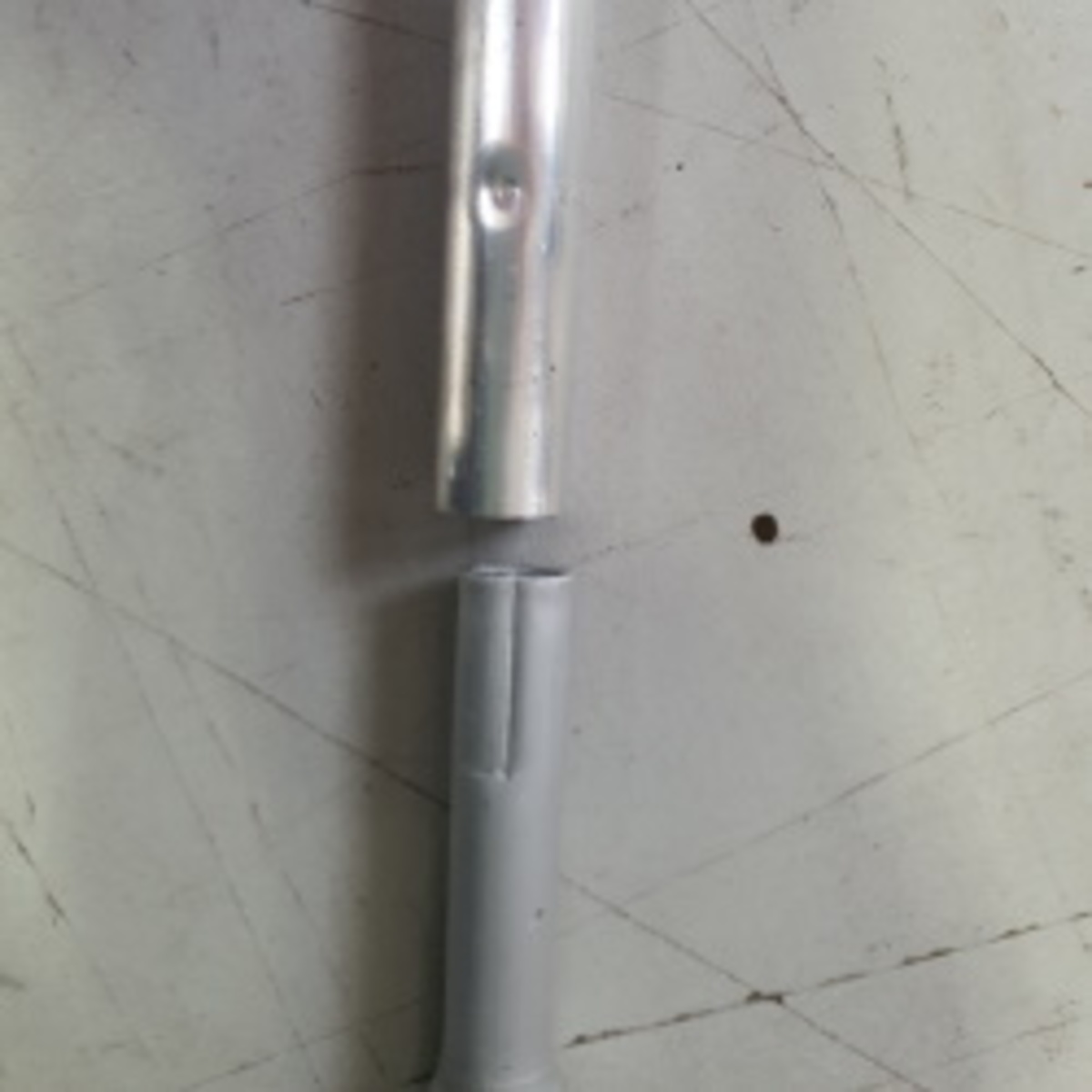

Attention when assembling the aluminium bars together: each bar has a very little point on 1 side and a small L shaped groove on the other. Push the groove in the back of the other bar so that the point slides in the groove. Then twist the bar so the point slides and locks in the lower part of the L shape groove. (this is not explained in the manual). This way, the bars are locked together. This will avoid the bars from disconnecting once your canopy is mounted and moving in the wind.
STEP 9B - Attaching a roller blind as a "roof" shade screen
Attach the blind to the inside of 1 beam of your pergola and pull the blind to the other side. There you screw 2 hooks into the beam. Put the eyes of the blind around the hooks and pull the blind a bit tighter. Do not roll up the blind too tight as you may bend the aluminium tube in the blind. When you choose this solution it is handy that your pergola is not too high and that you can easily reach the top of the pergola with your hands to unhook and hook the blind. The roller blind is more sensitive to strong winds, so only close the blind when you are there and roll it up when you leave. As a permanent pergola this solution is not so suitable, but it can be a good solution for a small pergola on a balcony. For example, let's say you have a balcony 3 metres wide and 150cm deep as shown in the sketch alongside (the black lines). Then you can set up a small pergola there (the green lines), attach the roller blind (the blue line) to the side of the wall, roll it out, fold it over the other beam and pull it down where you fasten it. This way you have a "shade roof" and shade on the vertical side with only 1 roller blind.
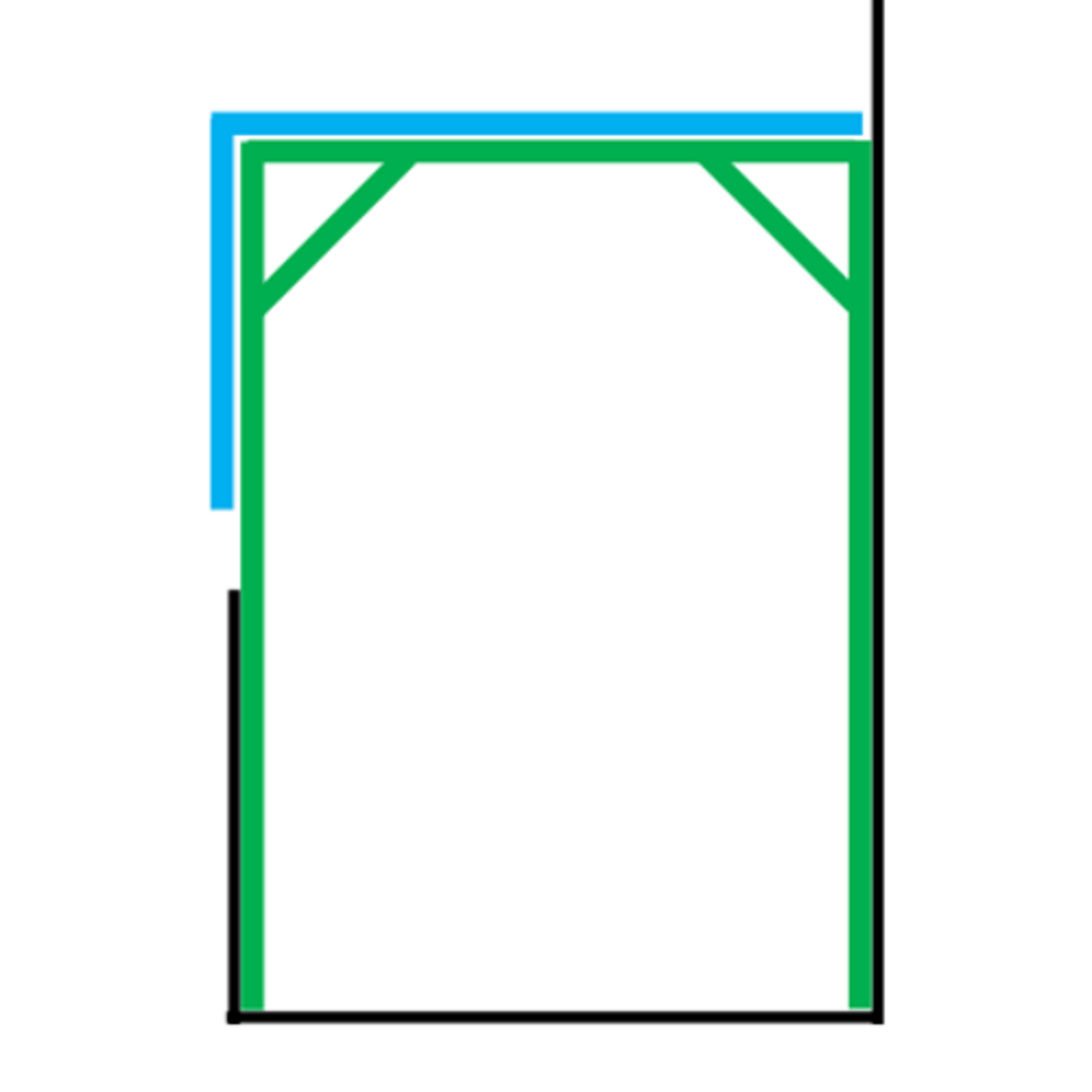

How do you choose your wood to make a pergola?
You can, of course, buy the cheapest wood you can get at the hardware store, but I really don't recommend that...
The wood of a pergola suffers a lot from rain and sun, and a cheap beam will bend very quickly. In addition, you'll notice that it's difficult to get wood in longer lengths at a DIY store, so making a pergola becomes very difficult!
Please pay attention to the following things when buying wood:
Always choose hardwood or pressure treated pinewood!
Untreated wood just rots very quickly outdoors and that is a waste of money.
Painting it well will not help you much since moisture will still penetrate at screw holes and seams. In addition, wood always works and rainwater and fungi will therefore get into the small hairline cracks that will form in your paint layer.
Choose the correct head size / section of the beam:
7x7cm beams are naturally cheaper than 9x9cm, but they also bend more quickly. A 7x7cm post is therefore not suitable for retractable canopies. The steel cables of these retractable canopies are under high tension and the beam will therefore bend. You can, however, use a 7x7cm pole for a small pergola with a shade sail or for a roller blind on your balcony.
A 7x7cm beam will also warp faster than a 9x9cm beam.
We use following wood types and sizes for our pergolas with a retractable canopy:
Pressure treated pine 9x9cm (3,54 inch) for a max free span of 3 meters (9ft + 10 inch)
Pressure treated pine 14x14cm (5,5 inch) for a max free span of 5 meters (16ft + 5 inch)
Hardwood Angelim Vermelho 9x9cm (3,54 inch) for a max free span of 5 meters (16ft + 5 inch)
For pergolas with a wooden or closed roof, we recommend to use at least 14x14cm (5,5 inch). In wintertime you might have snow on it and that might weigh a lot.
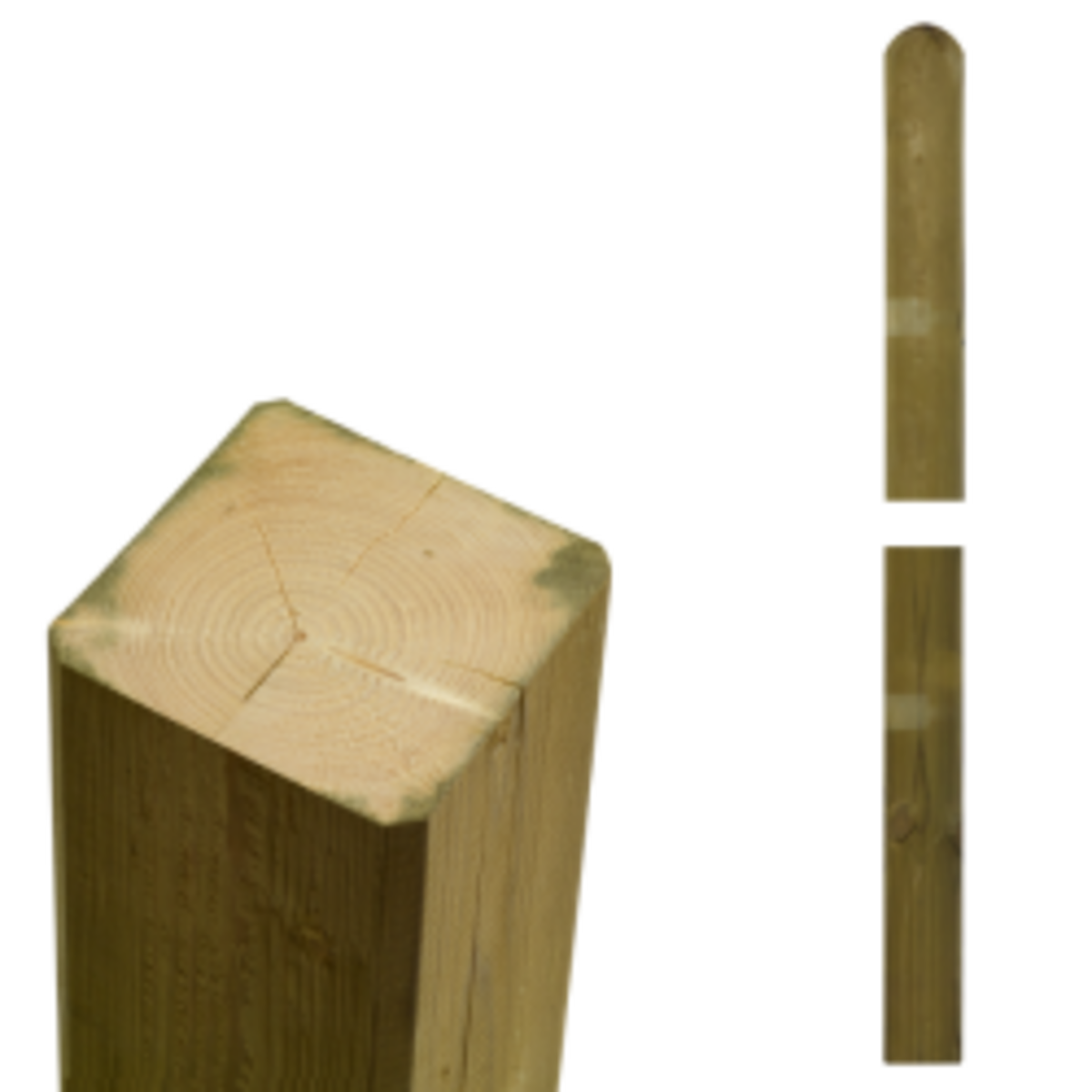

7x7cm pressure treated pinewood:
Unfortunately, 7x7 poles are almost impossible to obtain as laminated and we will therefore have to make do with "ordinary" sawn poles, where the risk of warping is high. We offer you 7x7cm posts of pressure treated wood, up to 270cm long.
9x9cm pressure treated and laminated pinewood:
If you have the possibility, always choose laminated posts!
With a laminated post the trunk is sawn in half lengthwise and the two halves are glued together back to back. This makes the chance of warping extremely small and reduces the risk of cracking. And a laminated post is stronger than a solid wood post! We can offer you posts of 9x9cm pressure treated and laminated pinewood up to 368cm long! (longer then 250cm = shipping within France only)
14x14cm pressure treated pinewood:
The 14x14cm pressure treated pine wood posts are available up to 480cm in length. Due it's large thickness and cut out of the hart of the tree, the risk of warping is low. Ideal for your pergola, but heavy to work with. Pending the humidity these posts weigh up to 10kg for each meter of length.
(longer then 250cm = shipping within France only)
9x9cm hardwood Angelim Vermelho
Our 9x9cm hardwood poles are from the Angelim Vermelho species and are of very high quality. Although very difficult to obtain, we almost always have 9x9cm posts up to 500cm in stock! Here too, we try to dry the posts in the open air to see if there are any deformations. Unfortunately, due to the limited supply, we do not always have the time to do this.
Please take a weight of 10kg per meter length into account.
FAQ - frequently asked pergola questions









